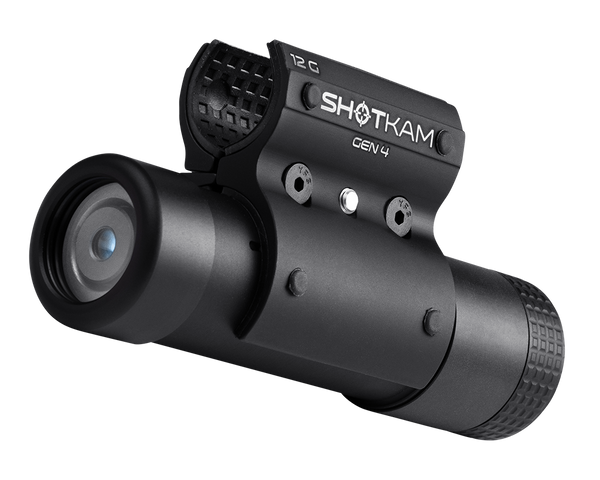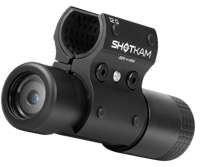The Churchill Method of Shooting
Understanding the Axiom of "Keeping Your Eye on the Ball"
An axiom is defined as a proposition that needs no proof and is considered to be self-evident. It is truth taken for granted, and serves as a starting point for deducing and inferring other truths. Axioms contrast sharply with opinions or conjecture. Essential and inviolable truths such as “You can’t be in two places at once,” “Something either is, or it isn’t,” and “Everything exists” form the foundation of our understanding of the world.
Is there an axiom we can reference when attempting to intercept a moving object? Whether catching an outfield fly with a baseball mitt, hitting a baseball with a bat, or intercepting a volleyed tennis ball with a racquet, there is indeed an axiom we can apply: “Keep your eye on the ball.” Few would disagree with this essential truth. Is it possible to catch a baseball while looking at the mitt or hit a baseball while looking at the bat? Sure. And blind squirrels find nuts every now and then too. But when intercepting a moving object, the applicable “rule” is to maintain constant visual focus on the object we are trying to intercept, and not the object we are trying to intercept it with.
This was the basis of Robert Churchill’s Theory of Allowance, one of the most important elements of what we now refer to as The Churchill Method, and his most important contribution to wing and clay shooting. While Churchill is often maligned and just as frequently misunderstood, he took the above axiom about intercepting moving objects and broadened its application to include the art and action of engaging moving targets with a shotgun. In his initial work “How to Shoot” (cir. 1925) and his later quintessential work “Game Shooting” (1955), he proclaimed, “the shooter should not be conscious of his muzzle, the rib or sight. His eye, or rather his attention, should be fully occupied with the bird, and, if he holds his gun properly, he will hit whatever he is looking at.”
When shooting a “long gun” man’s natural tendency was, and continues to be, to consciously align the gun barrel or aim in order to apply forward allowance. Against this backdrop, Churchill’s axiom was groundbreaking. He further urged his students, “by correct mounting and body work, shoot naturally without constraint or effort [seemingly] straight at the bird; but subconsciously, overthrowing a little and so giving the necessary lead.” It sounds like voodoo, but it works. While others, like Churchill’s contemporary Percy Stanbury, later followed Churchill with well recognized written works, no one before or since Churchill has advanced a theory, or articulated a principle, that is more significant for the wing and clay shooter.
The Churchill Method and Sporting Clays
Among sporting clays shooters however, a sizable school of thought persists that these principles don’t apply in our sport. We encourage our squad mates to tell us what lead or gap they see between the target and the barrel after they pull the trigger (even though it is virtually impossible for us to replicate the duality of focus that our squad-mates used to measure their three-foot lead). If you insist on measuring lead, magazine articles abound that reinforce the merits of measuring perceived lead. One can even purchase a big “honkin” green or orange front sight in order to see the barrel better, or purchase a DVD on how to calculate the lead applied to specific shots.
When I first started shooting sporting clays, I read a bit about The Churchill Method. At first glance, and for a number of years thereafter, I couldn’t understand the concept of trusting the subconscious to apply lead or how a shooter could consistently hit clay targets without consciously and visually steering the gun to engage the target. From the age of 8, when I first started competing in NRA small bore, through my tenure in the US Army as both an instructor and an operator, I had employed, taught and nicely perfected the technique of lining up the sights of a firearm to meet the center of a target. So, like many other neophytes to the world of sporting clays that stumbled across Churchill, I summarily dismissed his method as impractical and illogical.
It wasn’t until years later that I experienced my epiphany under the watchful eye of an instructor. I came to understand that sporting clays targets, as with game birds, must be engaged in a wholly different fashion than a stationary target. We point a shotgun. We do not aim it. We intercept or engage a clay target much like we do a baseball, with the target being the sole object of our visual focus. Any awareness of, or focus on, the mitt or the gun barrel diminishes our focus on the object being intercepted, thus reducing the quality of the data reaching our eye, optic nerve, and cerebral computer.
Since my conversion, I have tried to understand why Churchill’s Theory of Allowance and his method are not more in the forefront of current thought. A quick online search of “Churchill Method” will turn up a number of “experts” that summarily dismiss the Churchill Method because of what I would classify as misperception about the man and his method. The two distinct elements of The Churchill Method are 1) his Theory of Allowance, and 2) his method of mounting and moving to the bird.
While it is not possible to mount a comprehensive defense of The Churchill Method here, it is critical to differentiate his personal style of shooting from The Method. I will concede that Robert Churchill employed a stance and foot position that was quite open with weight evenly distributed over both feet. While his stance was indeed unconventional, it compensated for his stout build and enabled him to swing to a target better than almost all of his contemporaries. In “Game Shooting”, Churchill himself acknowledges that stance should be adjusted or customized to the shooter.
While I am a strong advocate of a consistent “ready position” or starting position, I will further concede that Churchill’s recommended “ready position”, with “gun stock pressed tight under the right arm…and barrels on a line with the right shoulder, and at a right angle to the torso” might not be appropriate for many modern target presentations. It was however, and still remains, the gold standard for engaging flushing birds, which was Churchill’s primary orientation. Most who reject The Churchill Method do so because they have not delved deeply enough into his work. To discard his method on the grounds of his style is tantamount to throwing the baby out with the bathwater. His “Theory of Allowance” and detailed instruction on mount and movement are his greatest gifts to posterity.
I employ and teach my students a stance that is more oblique to the target line than Churchill’s, with the lead foot pointed just off the anticipated break point, more akin to the style of Percy Stanbury, a Churchill contemporary. This seems to work better for most shooters although, as mentioned earlier, stance should be individualized to a degree.
With the wide variety of target trajectories we encounter in modern sporting clays and the fact that their flight paths are more predictable than game birds, the shotgun barrel on a given target presentation should be consciously oriented on the hold point and target line just prior to calling for the target. Once the target is launched, the gun barrel(s) should remain oriented on the target line while the shooter moves with the target and simultaneously mounts the gun to the cheek and shoulder. The target line, or trajectory of the target, should dictate the shooter’s hold point and barrel orientation. Past that, having read everything available by or on Churchill, The Churchill Method is as much “essential truth” today as it was 60 years ago.
So, before traveling down one of the many rabbit holes available to shooters in search of the newest target engagement method, understand that the world will always be round, the planets will continue to revolve around the sun, and in order to engage a moving target we need to apply sharp visual focus to it, without any visual awareness of the gun barrel. These are timeless truths.
- Don Currie, Chief NSCA Instructor
For more Don Currie articles, visit http://doncurrie.com/
You are reading:











